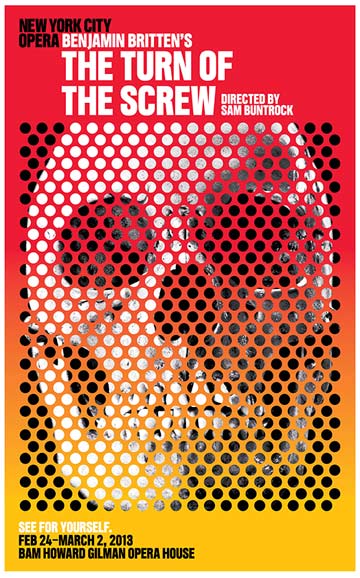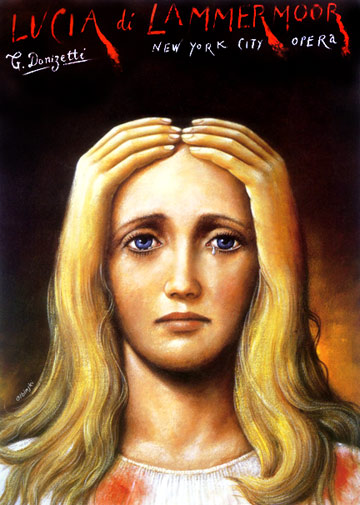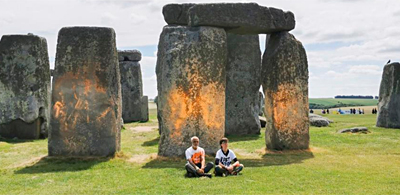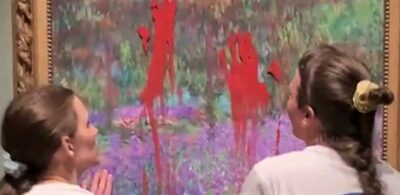The death of New York City Opera

On October 1, 2013, the 70-year-old New York City Opera (NYCO) canceled its 2013-2014 season and announced its disbandment. Faced with crushing financial problems, the company filed for Chapter 11 bankruptcy, citing its inability to raise sufficient funds to continue operating. The NYCO’s endowment shriveled from $48 million in 2008 to $5.07 million by the end of 2012. In a desperate attempt to cut costs in 2011, the company had reduced its performance schedule, moved out of its Lincoln Center home to become an itinerant troupe, and reduced its administrative staff of fifty by half.
In 2012 the company auctioned off 90% of its costumes, props, and sets, and the union for the NYCO’s orchestra and chorus members agreed to pay cuts of more than 80%! Still, the company faced a deficit of some $5 million. The NYCO initiated an eleventh-hour fundraising attempt in Sept. 2013, hoping to raise $7 million needed to keep operations running, the opera company even started a “crowdfunding” campaign on Kickstarter Inc. in order to help raise the funds; they succeeded in raising only $100,000.
Here is where the “supply and demand” argument made by free market advocates breaks down. You may think art is just another commodity given the money mad attitude of today’s gallery owners, museum CEOs, and auctioneers, not to mention publicity seeking “artists” and the bevy of pop star entertainers continually shoved in our faces. But art is not inspired nor entirely governed by the marketplace, it is ephemeral and as free as a wild creature, confine it in a cage of gold and it will die. Likewise, bend it to your political will and it will also perish. This is not to say that some type of state intervention is not necessary to nurture the arts. Before some of you howl, “Socialism!,” first read Jordan Bloom’s essay, The Trouble With Separating Art and State.
Jordan Bloom is the associate editor for The American Conservative, that bulwark of the paleoconservative voice, where the essay was originally published on May 2, 2012. I mention Mr. Bloom’s article, not because it links to a 2010 web log post of mine detailing President Obama’s reducing arts funding in the U.S., but because of the following salient point made by Bloom:
“(….) many of our most cherished art forms have never existed in the absence of a patronage system yet there are fewer patrons than there used to be (though the fine art world seems to be doing fairly well in the economic malaise, thanks mostly to rising income inequality). And Uncle Sam, one of the biggest patrons, is broke. Still, I think it’s spiteful and too easy to go after NEA funding rather than a bloated defense budget, as the President has done. Governments have invested in the arts in some form since the dawn of civilization.”
New York’s former mayor Michael Bloomberg refused to intervene on behalf of the NYCO, saying only that the company’s “business model doesn’t seem to be working.” It is interesting that Bloomberg donated $350,000 of his own money to defeat the recall of pro-gun control Democratic Senators in Colorado, but he did not have a penny for the New York City Opera. The Independence USA PAC, Bloomberg’s personal political action committee, spent $2 million in Virginia to assure the Democratic Party candidate for Governor, Terry McAuliffe (former chairman of the Democratic National Committee), would win the election. Again, not a cent for the NYCO, but millions of dollars for a Democratic Party apparatchik. Forbes has pegged the “liberal” Bloomberg as the seventh-richest man in the U.S., putting his net worth at $31 billion. Too bad Mr. Scrooge did not have a dime for the NYCO.
The New York City Opera ran a free educational program for children that reached over 3,000 kids in more than 20 schools across New York; the program was no doubt the first exposure to opera enjoyed by many inner-city children of elementary, middle, and high-school age. Part of the program entailed taking students to live performances of the New York City Opera. It breaks the heart to know that the company took opera directly to the classroom and the school campus to an enthusiastic young audience, but now it is all over.
I understand the value of the NYCO’s now defunct school program. When I was in elementary school my entire class was taken by bus to the Shrine auditorium in downtown Los Angeles to see a performance of The Magic Flute (Die Zauberflöte) by Wolfgang Amadeus Mozart. It was a transformative moment for me, and most likely for other classmates of mine, but it is difficult to imagine such a thing happening in today’s Los Angeles, or in any American city for that matter.
During the past five years arts education has been slashed 76% by the Los Angeles Unified School District in response to the economic downturn, reducing the arts budget for school children from $78.6 million to $18.6 million (the LAUSD serves some 694,288 students). This is reflective of a national trend, as art budgets in schools have been drastically cut because of draconian funding cuts by state and federal government.

During its long history, the New York City Opera helped launch the careers of singers like José Carreras, Placido Domingo, and Beverly Sills (1929-2007). Ms. Sills first performed at the NYCO in 1955 as a twenty-eight-year old, and she became America’s operatic superstar between that time and the 1970s.
A glimpse of Sills at the New York City Opera company is found in this excerpt of a live performance in 1972 of Gaetano Donizetti’s, Maria Stuarda. A better appreciation of Sills and the New York City Opera can be found in this full-length live recording of Sills performing in Vincenzo Bellini’s, I Puritani (The Puritans). Upon her retirement Sills became the general manager of the NYCO from 1979 to 1989.
A national treasure like the New York City Opera is reduced to begging for donations on Kickstarter Inc., but still goes under, while wealthy “art stars” and entertainment celebrities are daily paraded before us as the only people worth paying attention to. Why is this so? It is certainly no aberration, the market keeps the run-of-the-mill on center stage as a profitable business enterprise. When selling widgets one must appeal to the lowest common denominator, and the super profits are found in pop, not opera.
So why is this aging punk rocker lamenting the closure of the New York City Opera? Because the sweet strains of opera have always been part of my household, even in childhood, and I come from a working class family. Over the years “radical” friends have told me that opera is bourgeois, and that it belongs to elites, but this indeed describes the greater part of Western art. Are we to throw it all away, or perhaps just dispense with the things that do not fit the political agenda of the day? This appears to be the direction we are willy-nilly stumbling towards.
All bourgeois achievements in art, music, theater, architecture, and yes, in science and politics as well, are part of our inheritance. We should learn from these things, they should be foundational to our own efforts. The problem with those involved in contemporary art, culture, and yes, political activism, is an almost total lack of awareness when it comes to past struggles and accomplishments; postmodern society has become totally ahistorical, and it is no mistake. If we are to create a suitable art for the 21st century, it will happen only after we fully understand and absorb old forms. As the expression goes, “Don’t throw the baby out with the bath water.”
The New York City Opera’s once large and hardworking staff has been reduced to only two individuals, the company’s general manager, and the troupe’s managing director. Their jobs are now to simply wind down the NYCO’s operations. There are rumors that the company may reconstruct itself, and that it might find a place to rehearse and perform at New York’s Purchase College, but without the type of government investment that Jordan Bloom wrote in favor of in The American Conservative, the New York City Opera is no more.

The U.S. government currently spends approximately $716 billion on “defense,” and has appropriated a budget of a little over $138 million for the National Endowment for the Arts (NEA).
For fiscal year 2013, the Obama administration requested $7.4 billion for the National Science Foundation (NSF), an increase of $340 million from FY 2012. The House and Senate Appropriations Committees approved $7.3 billion for the NSF in 2013.
What if the enlightened “representatives of the people” from both sides of the aisle had appropriated more than $1 billion to the National Endowment for the Arts? What if the government had bailed out the New York City Opera? What if the NYCO had received the type of government funding that would have allowed its educational programs to reach, not 3,000 children, but 3 million kids? Civilizations are judged by their arts and sciences, are they not?
On March 4, 2007, I attended the L.A. Opera production of the Rise and Fall of the City of Mahagonny at the Los Angeles Dorothy Chandler Pavilion. Naturally, I purchased a ticket for the inexpensive “nosebleed” section, where retirees, students, and shabbily dressed artists with threadbare pockets found seating.
Amongst the hoi polloi in those last rows the enthusiasm for opera was palpable. I sat next to an elderly woman that had scrimped and saved in order to get her ticket, and she was elated to be there that evening. Yes, opera is for the people, and it is a blot on the nation that a way could not be found to keep the New York City Opera open and well funded.



